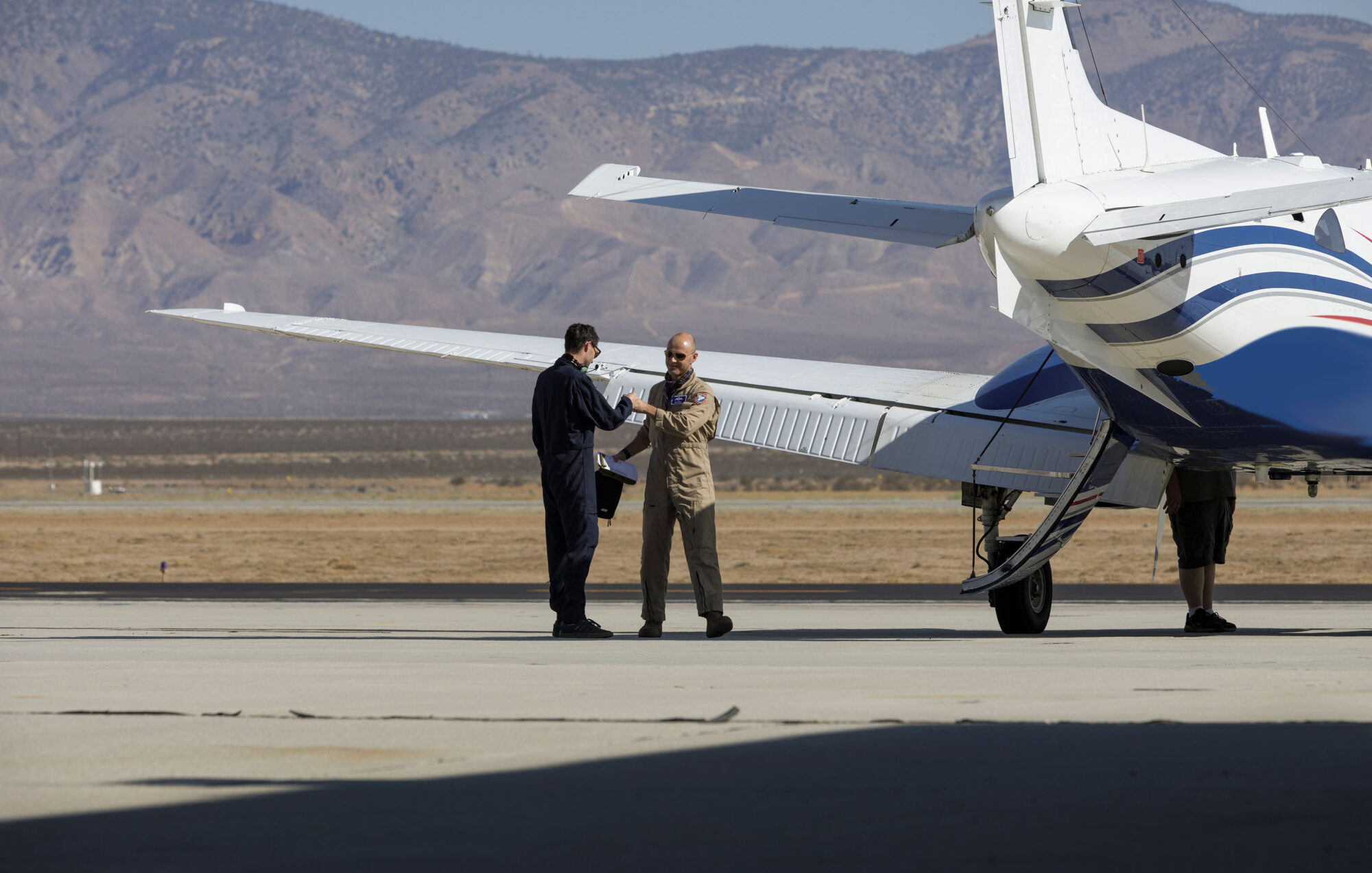ALEX NAIMAN, CTO
01
Our goal in building the world’s most capable pilot, the Merlin Pilot, is to enable it to fly aircraft in the same way that human pilots fly today. The first step on our roadmap to that goal will fly a Cessna Caravan from takeoff to touchdown, assisting and augmenting an onboard human pilot. This first version of the Merlin Pilot will also be capable of interacting with Air Traffic Control (ATC) over the radio, using Natural Language Processing (NLP) software to understand and respond to ATC. As we work to certify this first version, we are also developing new software to support a next set of piloting skills to reduce the human pilot workload during critical junctures of flight so they can fly more safely and effectively.
A new era in flight automation
From the invention of the autopilot by Lawrence Sperry over a century ago, automation has played a significant role in the expansion and scalability of the aviation industry. Today, the U.S. national airspace system serves over 45,000 flights every day and potential shortages of pilots are forecast to prevent future scaling as demand for air transport continues to grow. The U.S. Air Force, a vital pillar of our national security, is also seeing a ~2,000 pilot shortfall today, putting that branch in a “precarious position”. In both civil and defense markets, the Merlin Pilot will provide new options to scale up operations by offloading flying duties from human crew, allowing air operators to grow without the constraints of pilot shortages.
Working with pilots, not replacing them
While we want to reduce the impact of pilot shortages on air operators, we also recognize the immense value that highly trained professional human pilots bring to flying. We therefore lean into human-machine teaming (HMT), where the Merlin Pilot is working with a human pilot, and where we can tap into that expertise and help focus it strategically. Our goal is not to replace human pilots but to help make them more effective. For example, to decide what product features to build first, we measure current crew workloads and prioritize reducing the peak load, when task saturation can lead to safety lapses. This close human-machine teaming ensures the safety and expediency of getting autonomous solutions into the market.
Today, our focus is on developing autonomy, not on removing human crew from aircraft. We don’t rely on a command and control link to the ground, which is not reliable enough to perform safety-critical functions in a civil context and is susceptible to intentional disruption in a contested environment in a military context. In the future, when our onboard autonomous systems are fully qualified to pilot the aircraft and regulations have adapted to allow for uncrewed operation, operators will have the option of using the Merlin Pilot without onboard crew.
Building with regulators and certification requirements from the beginning, not as an afterthought
The aviation industry’s history of continuous improvement to become one of the safest modes of transportation is due in large part to the work of regulators and the consensus standards the industry has developed. Merlin works within these existing standards and paradigms to ensure Merlin’s aviation systems are safe and effective. Where our designs are innovative and go beyond what’s been done before, we work with regulators early on to define how we will show our systems are safe.
Today, we can show early evidence of this as we stand up our first conformed aircraft using the plans for software certification that were approved by the Civil Aviation Authority of New Zealand last year. With our first certified system becoming a reality, we will use Merlin’s system test bench (announcement coming soon) to verify our design and implementation. This design includes our patented system architecture, which combines bleeding-edge natural language processing technology with aviation standard safety critical software to deploy unprecedented capability in an aircraft certified for commercial operations.
Beyond our certification milestones, we’ve demonstrated the capability of our systems in the real world, including in our FAA-sponsored Alaska flight trials last summer. Data from these trials has been invaluable throughout our system development. We use radio communications we recorded to train and test our NLP-based automated communications system. Workload analysis and other human factor evaluations that we performed in Alaska using both standard aircraft systems and our prototype Merlin Pilot implementation, inform and support the design of our certified system.
More to come soon as we dive into the uses for artificial intelligence (AI) in aviation in upcoming posts!
We’re hiring! At Merlin, we have some of the most incredible people on our team, including these amazing engineers. If you’re interested in joining Merlin to make our shared skies safer and more accessible, look at our open roles.
